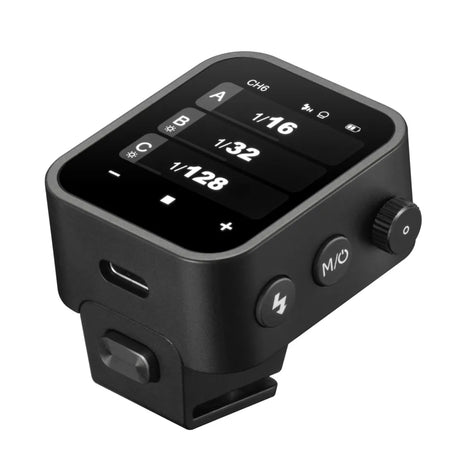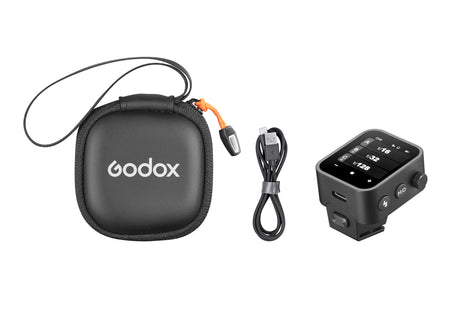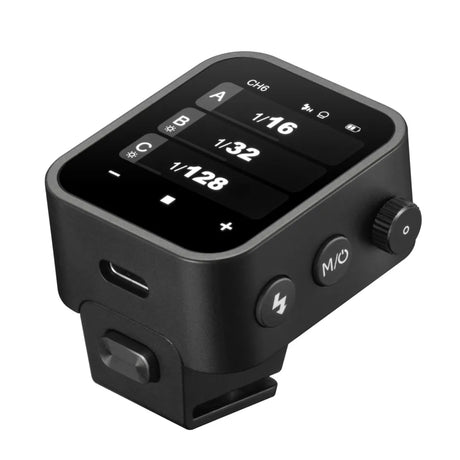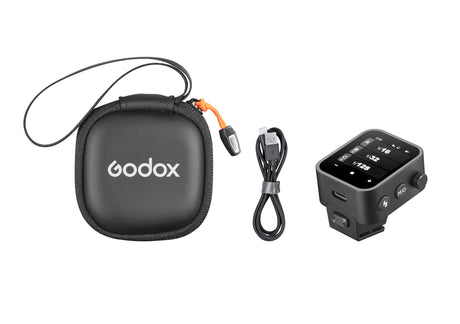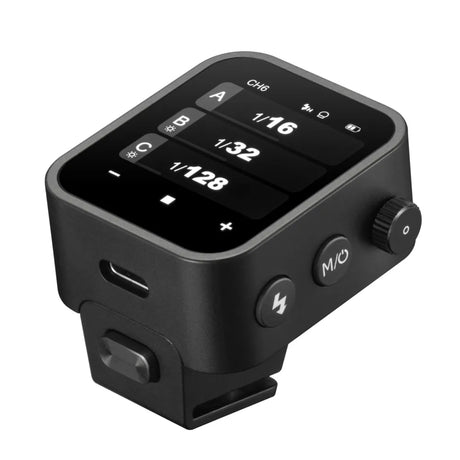Today, we're delving into the unboxing and review of the recently released Godox X3 flash trigger. This trigger, previously known as the X Nano, has been rebranded as the X3 by Godox. Let's take a closer look at what this compact trigger has to offer compared to its predecessors.
Unboxing Experience

The packaging of the Godox X3 trigger showcases an improvement in overall presentation, signalling the company's commitment to quality. Opening the box reveals a sleek slide-out design reminiscent of premium tech products. Inside, we find a protective case for the X3 trigger, featuring stylish orange accents and a convenient wrist strap. This attention to detail sets the stage for the quality of the product within.
Design and Build

The Godox X3 trigger impresses with its compact size, living up to its former name, the X Nano. Compared to its predecessors like the X2, the X3 boasts a noticeably smaller form factor, making it a perfect fit for photographers seeking portability without sacrificing functionality.
One notable feature is the USB Type-C charging port, eliminating the need for traditional batteries and streamlining the device's design. The updated hot shoe design enhances durability, addressing past concerns with previous models. The inclusion of physical buttons alongside the touchscreen interface ensures ease of use for various shooting scenarios.
Key Features

Retaining compatibility with Godox's X wireless system, the X3 seamlessly integrates with a vast array of flash units, from speedlights to studio strobes. Advanced features like the TCM mode, inherited from higher-end models, offer unparalleled versatility in diverse shooting environments. With 32 groups and 99 channel IDs, users have ample flexibility in configuring wireless setups according to their specific needs.
User Experience

Navigating the touchscreen interface is intuitive, albeit with considerations for users with larger fingers. The internal lithium-ion battery, while convenient, may pose challenges for prolonged shoots, necessitating backup triggers for peace of mind.
Menu and Settings

The menu system offers extensive customisation options, from wireless settings to power control and sync modes. The inclusion of features like TCM mode and zoom control adds depth to the user experience, catering to a diverse range of shooting styles.
Suitability for Different Photography Styles

For photographers accustomed to meticulously dialling in settings, such as product or studio photographers, the Godox X3 flash trigger offers an ideal platform for precision control. Its extensive menu system and customisable options cater to those who prioritise fine-tuning every aspect of their lighting setup. However, for professionals working in fast-paced environments like events or weddings, where quick adjustments are paramount, the reliance on a touchscreen interface may prove less intuitive.
Photographers accustomed to tactile feedback and physical buttons they can press without looking may find other Godox triggers better suited to their workflow. Despite this consideration, the X3's compact size and advanced features still make it a compelling choice for those willing to adapt to its interface.
Comparison to Previous Versions

Compared to its predecessors, the Godox X3 flash trigger introduces several notable improvements. Its compact size and streamlined design make it even more portable than the X2, while the addition of a touchscreen interface brings a modern touch to flash triggering. Advanced features like TCM mode and backup channel scanning set the X3 apart from previous models, offering photographers enhanced control and reliability in their wireless flash setups.
Final Thoughts

In conclusion, the Godox X3 flash trigger stands out as a compact yet powerful tool for photographers. Its blend of portability, functionality, and advanced features make it a worthy addition to any gear bag. Whether you're a seasoned professional or an enthusiast looking to elevate your photography game, the Godox X3 flash trigger promises to deliver reliable performance and versatility in a compact package. So why not give it a try and see how it fits into your workflow?









